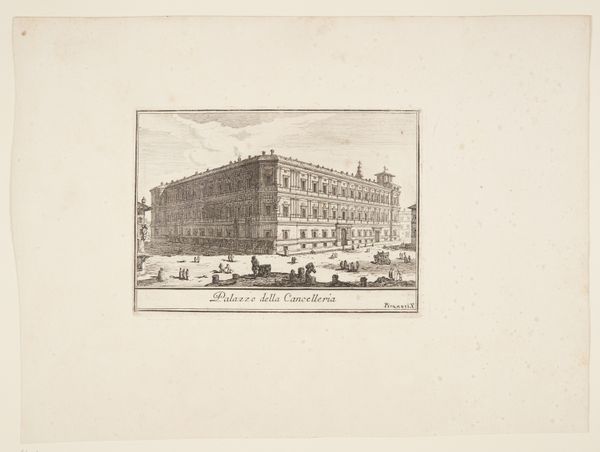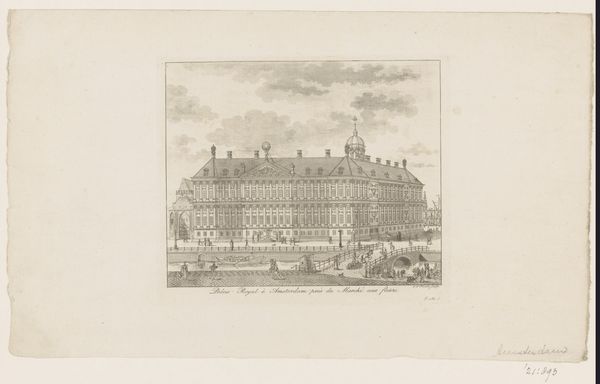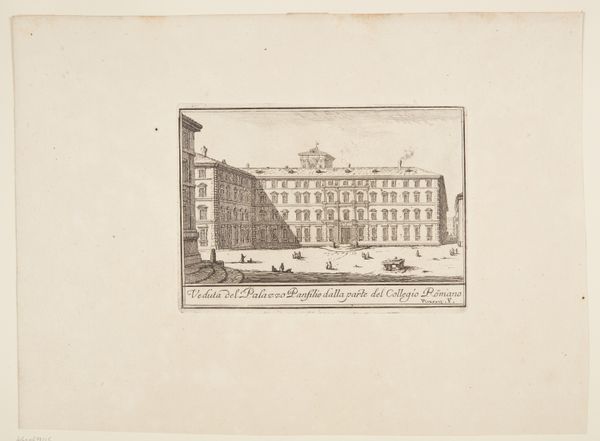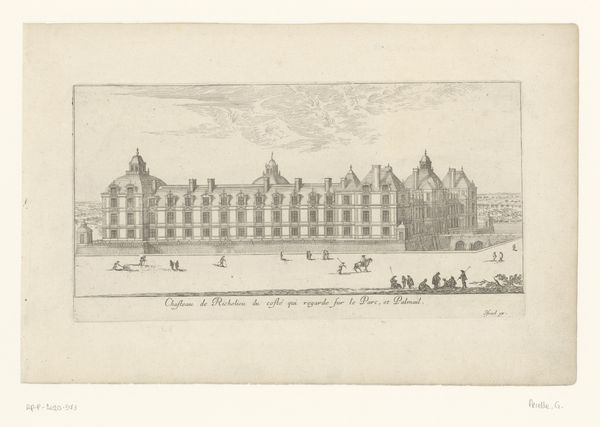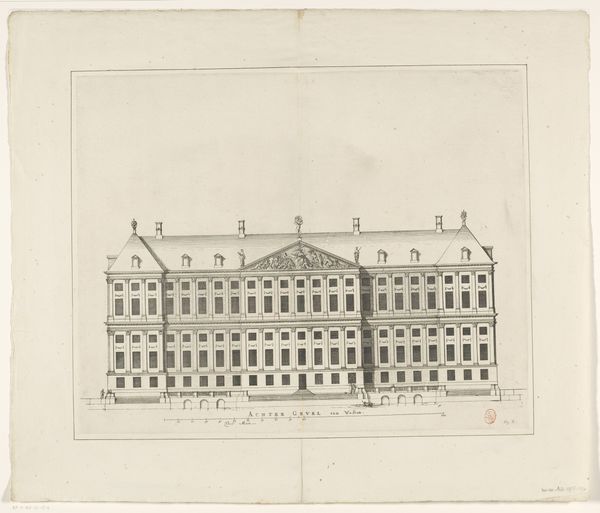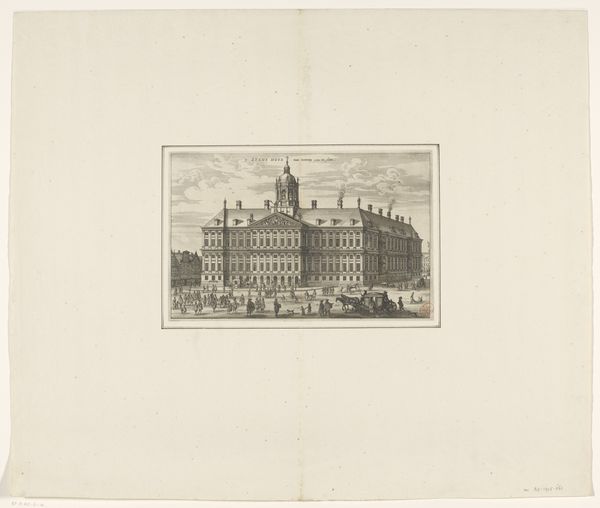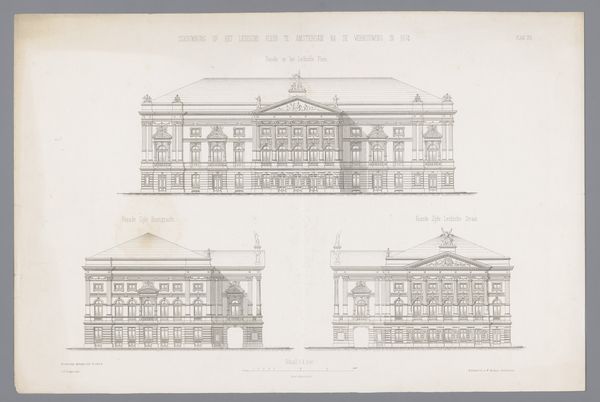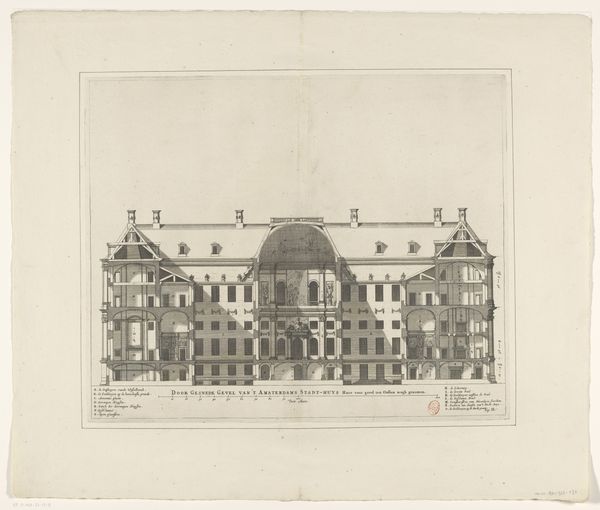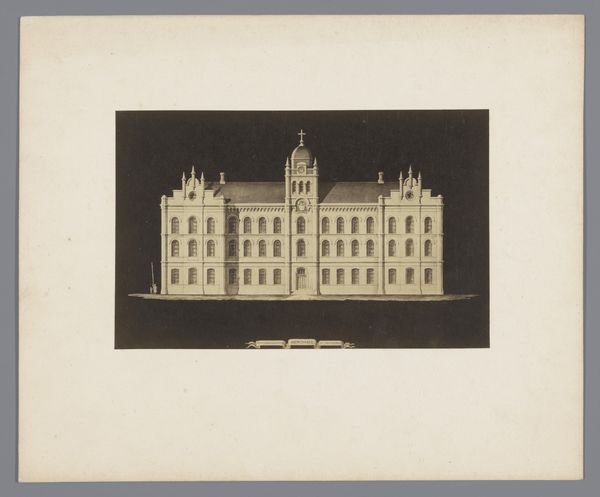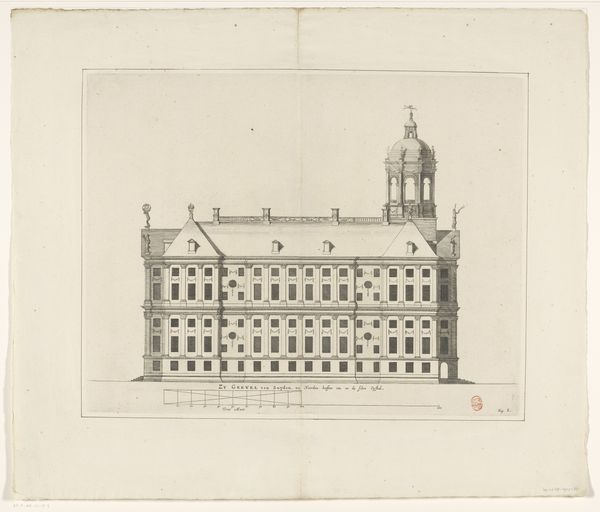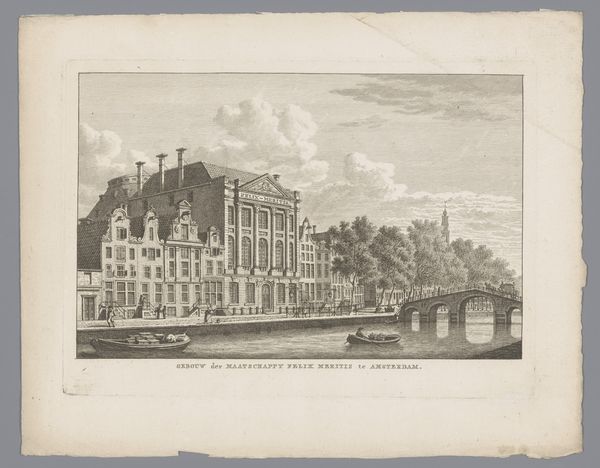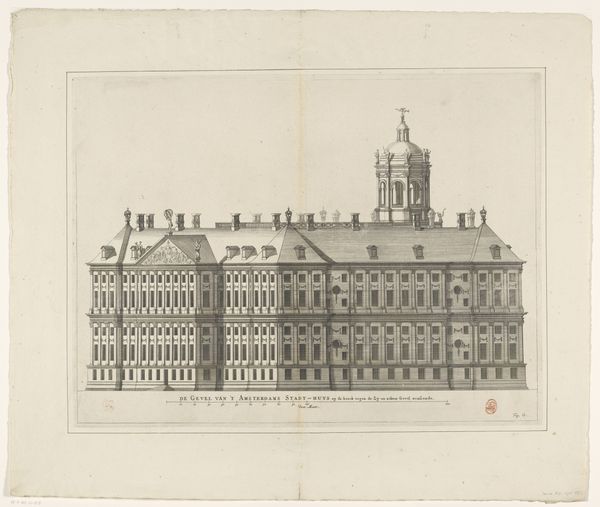
drawing, print, paper, ink, architecture
#
drawing
# print
#
paper
#
ink
#
cityscape
#
architecture
Dimensions: height 370 mm, width 535 mm
Copyright: Rijks Museum: Open Domain
Curator: Welcome. Before us is "Aanzicht op het Departement van Justitie te Den Haag," or "View of the Department of Justice in The Hague." Created sometime between 1850 and 1900 by Wegner & Mottu, it’s rendered in ink on paper. Editor: My initial reaction is one of intense order and civic weight. The building looms, an embodiment of law itself. Curator: Absolutely. Think about the symbolism embedded in such a monumental structure dedicated to Justice. Governmental buildings were strategically designed to project authority. This one projects permanence and unwavering legal principles. Editor: Yes, and those rows and rows of windows. They almost become an emblem in themselves, implying observation, vigilance, but also a potential for transparency or accountability… windows as seeing eyes, so to speak. Curator: I see what you mean. One could analyze the design elements to read as an aspiration for that perceived 'transparency.' This building represented the law, order, and perhaps even a sense of enlightened governance they were trying to portray. The question, then, is to what degree did the society view this building's function as delivering justice or perhaps even oppression. Editor: An interesting thought to consider. What about the stylistic choices? That Gothic revival detailing; what does it add? I almost want to ask, 'is there some symbolic relation?' Curator: The choice of Gothic Revival architecture carries symbolic weight itself. By evoking the Gothic, a style deeply connected to the historical foundations of law and tradition in Europe, the architects visually tied the Department of Justice to that legacy, intending to inspire trust. Editor: A constructed symbolism then, intended to elicit very specific emotional reactions: security, trust, continuity with the past. Very powerful stuff to inscribe onto stone and ink! Curator: Precisely! Considering the medium of print, we must also realize how readily images such as this would proliferate and circulate in the collective visual memory. It goes far beyond bricks and mortar when you disseminate an ideal through printing. Editor: So true. It shows that images truly do shape, and reflect, so much more than meets the eye. It makes me want to look even deeper the next time I walk past any prominent building. Curator: For me, it demonstrates the potency of buildings and images in visualizing and manifesting our collective values and social aspirations throughout time.
Comments
No comments
Be the first to comment and join the conversation on the ultimate creative platform.
